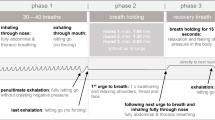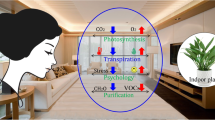Abstract
Purpose
Outdoor workers face elevated and prolonged heat exposures and have limited access to air-conditioned spaces. This study’s overarching research aim is to increase knowledge of municipal worker heat exposure and adaptation practices. The study’s sub-objectives are: (1) quantifying exposure misclassification from estimating personal heat exposure from the official weather station; (2) surveying worker’s knowledge and practices to adapt to extreme heat; and (3) relating heat exposure and adaptation practices to self-reported thermal comfort.
Methods
Participants wore a personal heat exposure sensor over 7 days from June 1st to July 3rd, 2015 in Tallahassee, Florida US. Next, participants confirmed the days that they wore the sensor and reported their daily thermal comfort and heat adaptations. Finally, participants completed an extreme heat knowledge, attitudes, and practices survey.
Results
Some participants (37%) experienced hotter and more humid conditions (heat index > 2) than the weather station. The most common heat adaptations were staying hydrated (85%), wearing a hat (46%), and seeking shade (40%). During work hours, higher temperatures increased the odds (odds ratio: 1.21, 95% confidence interval: 1.03–1.41, p = 0.016) of a participant feeling too hot. Shifting work duty indoors made workers to feel more comfortable (odds ratio: 0.28, 95% confidence interval: 0.11–0.70, p = 0.005).
Conclusion
In hot and humid climates, everyday, heat exposures continuously challenge the health of outdoor workers.


Similar content being viewed by others
References
American Conference of Governmental Industrial Hygienists (ed) (2014) TLVs® and BEIs®: Threshold limit values for chemical substances and physical agents and biological exposure indices. American Conference of Governmental Industrial Hygienists, Cincinnati, OH
American Industrial Hygiene Association (2003) The occupational environment: its evaluation, control, and management. American Industrial Hygiene Association Press, Fairfax
Anderson GB, Bell ML, Peng RD (2013) Methods to calculate the heat index as an exposure metric in environmental health research. Environ Health Perspect 121:1111–1119. https://doi.org/10.1289/ehp.1206273
Arcury TA, Summers P, Talton JW, Chen H, Sandberg JC, Spears Johnson CR, Quandt SA (2015) Heat illness among North Carolina Latino farmworkers. J Occup Environ Med 57:1299–1304. https://doi.org/10.1097/JOM.0000000000000552
Basu R, Samet JM (2002) Relation between elevated ambient temperature and mortality: a review of the epidemiologic evidence. Epidemiol Rev 24:190–202
Bates GP, Schneider J (2008) Hydration status and physiological workload of UAE construction workers: A prospective longitudinal observational study. J Occup Med Toxicol 3:21-6673-3-21. https://doi.org/10.1186/1745-6673-3-21
Bedno SA, Urban N, Boivin MR, Cowan DN (2014) Fitness, obesity and risk of heat illness among army trainees. Occup Med (Lond) 64:461–467. https://doi.org/10.1093/occmed/kqu062
Bernhard MC, Kent ST, Sloan ME, Evans MB, McClure LA, Gohlke JM (2015) Measuring personal heat exposure in an urban and rural environment. Environ Res 137:410–418
Bethel JW, Harger R (2014) Heat-related illness among Oregon farmworkers. Int J Environ Res Public Health 11:9273–9285. https://doi.org/10.3390/ijerph110909273
Bethel JW, Spector JT, Krenz J (2017) Hydration and cooling practices among farmworkers in Oregon and Washington. J Agromedicine doi. https://doi.org/10.1080/1059924X.2017.1318100
Byrne C, Lim CL (2007) The ingestible telemetric body core temperature sensor: a review of validity and exercise applications. Br J Sports Med 41:126–133. (doi: bjsm.2006.026344 [pii])
Centers for Disease Control and Prevention, Environmental Protection Agency (2016) Climate change and extreme heat: what you can do to prepare. EPA 430-R-16-061. Atlanta, GA
Connor Gorber S, Tremblay M, Moher D, Gorber B (2007) A comparison of direct vs. self-report measures for assessing height, weight and body mass index: a systematic review. Obes Rev 8:307–326 (doi: OBR347 [pii])
Department of Defense (US) (2003) Technical bulletin: heat stress control and heat casualty management. TB MED 507/AFPAM:28–152. Departments of the US Army, Navy, and Air Force, Washington, DC
Elrahman O (2008) Night-time road construction operations: synthesis of practice. Transportation Research and Development Bureau, New York State Department of Transportation, Albany, pp 1–13
Fleischer NL, Tiesman HM, Sumitani J, Mize T, Amarnath KK, Bayakly AR, Murphy MW (2013) Public health impact of heat-related illness among migrant farmworkers. Am J Prev Med 44:199–206
Garzon-Villalba XP, Mbah A, Wu Y, Hiles M, Moore H, Schwartz SW, Bernard TE (2016) Exertional heat illness and acute injury related to ambient wet bulb globe temperature. Am J Ind Med 59:1169–1176. https://doi.org/10.1002/ajim.22650
Gronlund CJ (2014) Racial and socioeconomic disparities in heat-related health effects and their mechanisms: a review. Curr Epidemiol Rep 1:165–173. https://doi.org/10.1007/s40471-014-0014-4
Gubernot DM, Anderson GB, Hunting KL (2014) The epidemiology of occupational heat exposure in the United States: a review of the literature and assessment of research needs in a changing climate. Int J Biometeorol 58:1779–1788. https://doi.org/10.1007/s00484-013-0752-x
Harduar Morano L, Watkins S, Kintziger K (2016) A comprehensive evaluation of the burden of heat-related illness and death within the Florida population. Int J Environ Res Public Health. https://doi.org/10.3390/ijerph13060551
Hayden MH, Brenkert-Smith H, Wilhelmi OV (2011) Differential adaptive capacity to extreme heat: a phoenix, Arizona case study. Weather Clim Soc 3:269–280
Hess JJ, Saha S, Luber G (2014) Summertime acute heat illness in US emergency departments from 2006 through 2010: analysis of a nationally representative sample. Environ Health Perspect 122:1209–1215. https://doi.org/10.1289/ehp.1306796
Kalkowsky B, Kampmann B (2006) Physiological strain of miners at hot working places in German coal mines. Ind Health 44:465–473
Kearney GD, Hu H, Xu X, Hall MB, Balanay JA (2016) Estimating the prevalence of heat-related symptoms and sun safety-related behavior among Latino Farmworkers in Eastern North Carolina. J Agromedicine 21:15–23. https://doi.org/10.1080/1059924X.2015.1106377
Korey Stringer Institute (2017) Wet Bulb Globe temperature monitoring. https://ksi.uconn.edu/prevention/wet-bulb-globe-temperature-monitoring/. Accessed 7 Dec 2017
Kuras ER, Bernhard MC, Calkins MM, Ebi KL, Hess JJ, Kintziger KW, Jagger MA, Middel A, Scott AA, Spector JT, Uejio CK, Vanos JK, Zaitchik BF, Gohlke JM, Hondula DH (2017) Opportunities and challenges for personal heat exposure research. Environ Health Perspect
Lane K, Wheeler K, Charles-Guzman K, Ahmed M, Blum M, Gregory K, Graber N, Clark N, Matte T (2014) Extreme heat awareness and protective behaviors in New York City. J Urban Health 91:403–414
Leon County Health Department (2011) Leon County community health improvement plan 2012–2017, pp 1–18
Mac VV, Tovar-Aguilar JA, Flocks J, Economos E, Hertzberg VS, McCauley LA (2017) Heat exposure in Central Florida Fernery Workers: results of a feasibility study. J Agromedicine 22:89–99. https://doi.org/10.1080/1059924X.2017.1282906
Maxim Integrated (2017) iButton. https://www.maximintegrated.com/en/products/digital/ibutton.html. Accessed 28 Feb 2017
Mirabelli MC, Quandt SA, Crain R, Grzywacz JG, Robinson EN, Vallejos QM, Arcury TA (2010) Symptoms of heat illness among Latino farm workers in North Carolina. Am J Prev Med 39:468–471
Montain SJ, Cheuvront SN (2008) Fluid, electrolyte and carbohydrate requirements for exercise. In: Taylor NAS, Groeller H (eds) Physiological bases of human performance during work and exercise. Churchill Livingstone, New York, pp 563–576
Moyce S, Mitchell D, Armitage T, Tancredi D, Joseph J, Schenker M (2017) Heat strain, volume depletion and kidney function in California agricultural workers. Occup Environ Med. (doi: oemed-2016-103848 [pii])
National Institute for Occupational Safety and Health (NIOSH) (2016) Criteria for a Recommended Standard Occupational Exposure to Heat and Hot Environments Revised Criteria 2016:1–192
NOAA National Centers for Environmental Information (2016) Global Historical Climatology Network (GHCN). https://www.ncdc.noaa.gov/data-access/land-based-station-data/land-based-datasets/global-historical-climatology-network-ghcn
Quandt SA, Wiggins MF, Chen H, Bischoff WE, Arcury TA (2013) Heat index in migrant farmworker housing: implications for rest and recovery from work-related heat stress. Am J Public Health 103:e24-6. https://doi.org/10.2105/AJPH.2012.301135
Sheridan SC (2007) A survey of public perception and response to heat warnings across four North American cities: an evaluation of municipal effectiveness. Int J Biometeorol 52:3–15
Spector JT, Krenz J, Blank KN (2015) Risk factors for heat-related illness in Washington crop workers. J Agromedicine 20:349–359. https://doi.org/10.1080/1059924X.2015.1047107
Stoecklin-Marois M, Hennessy-Burt T, Mitchell D, Schenker M (2013) Heat-related illness knowledge and practices among California hired farm workers in the MICASA study. Ind Health 51:47–55
Tanaka M (2007) Heat stress standard for hot work environments in Japan. Ind Health 45:85–90 (doi: JST.JSTAGE/indhealth/45.85 [pii])
Uejio CK, Wilhelmi OV, Golden JS, Mills DM, Gulino SP, Samenow JP (2011) Intra-urban societal vulnerability to extreme heat: the role of heat exposure and the built environment, socioeconomics, and neighborhood stability. Health Place 17:498–507
Washington State Department of Labor and Industries (2008) Outdoor Heat Exposure. Concise Explanatory Statement. Economic Analyses. Heat-Related Illness Small Business Economic Impact Statement. http://www.lni.wa.gov/rules/AO06/40/0640CES.pdf. Accessed 17 July 2017
Winsberg MD (2003) Florida weather. University Press of Florida, Gainesville
Xiang J, Bi P, Pisaniello D, Hansen A (2014) Health impacts of workplace heat exposure: an epidemiological review. Ind Health 52:91–101. (doi: DN/JST.JSTAGE/indhealth/2012-0145 [pii])
Acknowledgements
We acknowledge Dr. Jon Powell, Jennifer Hill, and Katherine Estevez from the city of Tallahassee who helped facilitate this project. We thank employees who participated in the project and Dr. Mary Hayden who shared the extreme heat social survey. Finally, we thank anonymous reviewers whose comments notably improved the manuscript.
Funding
This publication was developed under Assistance Agreement No. (RD #83574901) awarded by the U.S. Environmental Protection Agency to Christopher K. Uejio. The manuscript was also supported by Centers for Disease Control and Prevention grants (EH12-1202; U38-EH000941) and The National Institute for Occupational Safety and Health grant (5U60OH010900-03). It has not been formally reviewed by the EPA. The views expressed in this document are solely those of the authors and do not necessarily reflect those of the EPA. EPA does not endorse any products or commercial services mentioned in this publication.
Author information
Authors and Affiliations
Corresponding author
Ethics declarations
Conflict of interest
The authors declare that they have no conflict of interest.
Ethical approval
All procedures performed in studies involving human participants were in accordance with the ethical standards of the institutional and/or national research committee and with the 1964 Helsinki declaration and its later amendments or comparable ethical standards.
Informed Consent
Informed consent was obtained from all individual participants included in the study.
Rights and permissions
About this article
Cite this article
Uejio, C.K., Morano, L.H., Jung, J. et al. Occupational heat exposure among municipal workers. Int Arch Occup Environ Health 91, 705–715 (2018). https://doi.org/10.1007/s00420-018-1318-3
Received:
Accepted:
Published:
Issue Date:
DOI: https://doi.org/10.1007/s00420-018-1318-3




